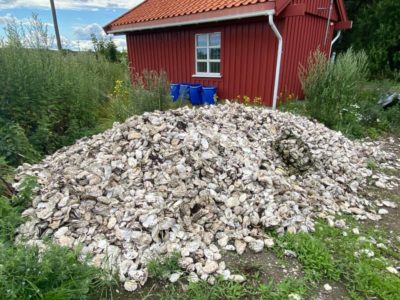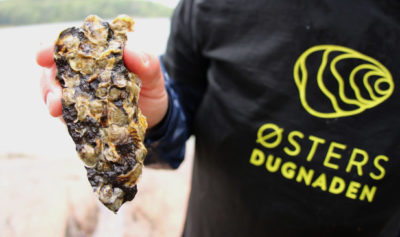Determined Norwegians have been trying to rid beaches all along the southern coast this summer of huge unwanted oyster colonies. A biologist and oyster expert warns, however, that their efforts may be in vain.

“When they’ve first found favourable spots where they thrive, they multiply at such a speed that they drive out our natural species,” Arnodd Håpnes of the environmental organization Naturvern-forbund, told newspaper Dagsavisen. He was questioned after a new rash of reports about an ongoing invasion of what the Norwegians call stillehavsøsters, which stem from the Pacific Ocean.
The oysters, infamous for their sharp shells that have injured more beach-goes this summers, have what Håpnes called “an enormous reproduction capacity,” with one female able to produce 300 million eggs.
“So when they first are here, it’s too late to do anything about it,” Håpnes said. “We’ll never get rid of them.”
Collection efforts underway nonetheless
Local officials in Vestfold and Telemark in the southwest aren’t giving up yet. Branding the oysters as an “unwanted and foreign species that’s had explosive growth along the coast of Southern Norway,” they launched an Østersdugnad (collective effort) that involves “safe plucking and handling” along with information about whether the oysters are safe to eat.
Outdoor recreational and environmental groups have also banded together to help clear the beaches, but it’s not easy even after two tons of oysters were collected and delivered for compost in one July week alone. The effort began last year and an estimated 26 tons have been removed from 190 beaches just since May 1st this year.

“This is first and foremost a contribution towards making the coastal areas safer, and reducing injuries,” Kristian Ingdal, project leader in Vestfold and Telemark, told Norwegian Broadcasting (NRK) on Wednesday. “There’s no guarantee people still won’t get cut, but removing so many oysters will at least help.”
News bureau NTB reported over the weekend that some local emergency clinics in towns along the Oslo Fjord have seen a literally sharp increase in the numbers of patients suffering serious cuts, after unwittingly stepping on the oysters that cling to rocks along the shoreline. “When the weather is good, we can quickly get 10 to 20 people a day needing help,” Inger Marie Moksnes at the Fredrikstad and Hvaler emergency hospital (legevakt) told NTB. Deep cuts need to be professionally cleaned, because of infection danger, and then stitched up. The healing process can put a damper on the rest of the summer holidays.
Now spreading up the West Coast
Stein Mortensen, a researcher at Norway’s marine research institutt (Havforskningsinstituttet), has been studying the Pacific oyster population that was deemed as permanently established in 2007. He recently wrote in Fiskerbladet that it’s now spreading into areas along Norway’s West Coast as well, around Bergen. He stressed that it’s difficult to predict how far north the oysters will go, but they’re known for easily adapting to new territory. The waters around Norway have also been getting warmer in recent years.
Mortensen agrees with Håpnes that once they’re established, there’s no getting rid of them. “It’s not possible to use harvesting or clean-up campaigns as a means of halting further spreading,” Mortensen wrote.
The best advice for swimmers and beachcombers is to use rubber shoes or boots along the coast. “It’s mostly under folks’ feet that the injuries occur,” Moksnes said.
NewsInEnglish.no/Nina Berglund

